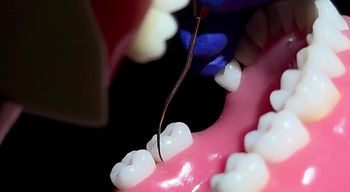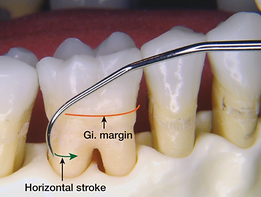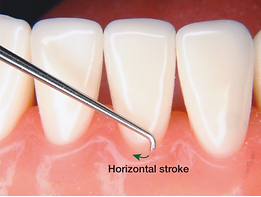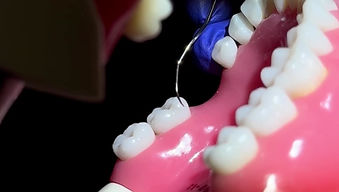Assessment Stroke
"Exploratory Stroke"
Used to detect calculus deposits or other tooth surface irregularities on the tooth surface.
Characteristics of an Assessment Stroke
Relaxed Grasp
Middle finger resting lightly on the shank
-
AVOID a tight, tense grip
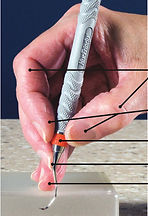
Adaptation
1-2 mm of the
SIDE of the tip
Lateral Pressure
Feather light pressure with working-end against the tooth
-
AVOID pressure against shank: reduces tactile sensitivity
Activation
Wrist activation is recommended
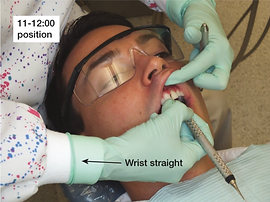
Stroke Numbers
Many, close, overlapping multidirectional strokes
Stroke Characteristics
Fluid, sweeping strokes
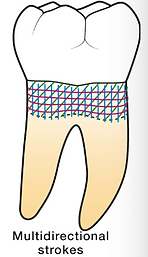
Tactile sensitivity
The ability to detect tooth irregularities, such as calculus deposits, by feeling vibrations transferred from the explorer tip to the instrument shank and handle.
-
explorer tip quivers as it passes over a calculus deposit on the root of the tooth.
-
vibrations are transmitted from the tip through the instrument shank and handle.
-
clinician feels these vibrations with his or her fingers resting on the instrument shank and handle.
-
clinician recognizes these vibrations as calculus deposits.
-
Types of Directional Strokes
Useful to detect calculus deposits in the following areas:
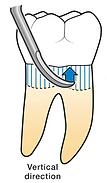
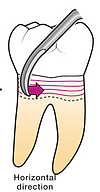

Vertical Strokes:
-
interproximal (mesial and distal) surfaces
-
between two adjacent teeth
-
-
facial/buccal and lingual/palatal surfaces
Oblique Strokes:
-
posterior teeth: facial/buccal and lingual/palatal surfaces
Horizontal Strokes:
-
posterior teeth: distofacial (DF) or distolingual (DL) line angles
-
anterior teeth: midline of facial or lingual surfaces
-
lower the handle until the point is toward, NOT TOUCHING, the base of the pocket
-
